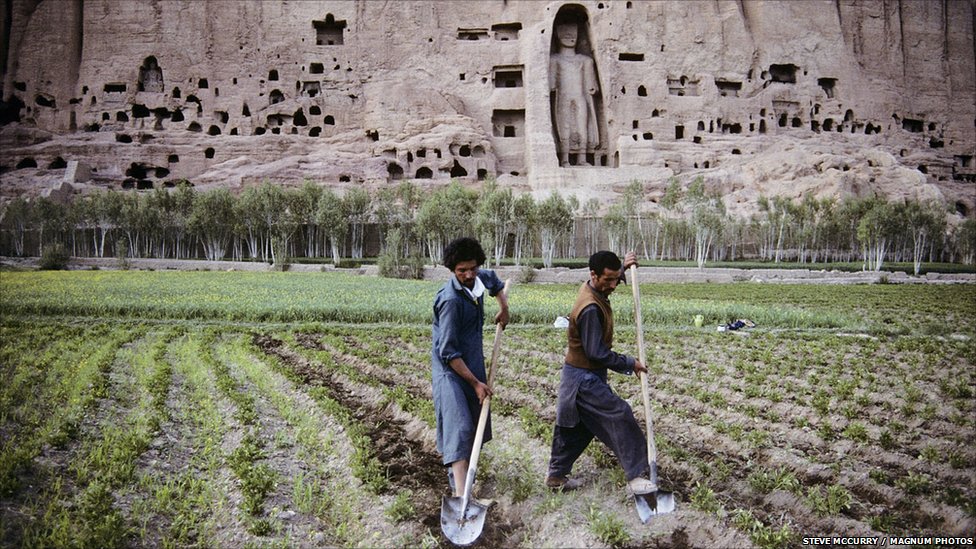Since the theories described in the first episode do not paint a clear picture of the Hazaras’ Shia orientation, so now we try to look at it from a new angle that is the conversion of the Mongol Il-Khanids in Persia and its effects on the Hazaras. As the northern and eastern Khorasan was under the rule of Il-Khanids, which was covering the entire Hazaraistan region, most probably the conversion of Il-Khanids to Islam directly affected the Hazaras.
When Changez Khan invaded Persia in 1220 and defeated the Khwarezmian king Jalal Uddin, there is no evidence as if he had appointed a Mongol governor in Persia. His mission in Persia was to punish Jalal Uddin and then move back to Mongolia to focus his attention on the conquest of China. Years later, a Qazi (Judge) from Qazvin, Persia, visited the court of the Great Khan, Mangke Khan, and requested him to establish Mongol rule in Persia and get them rid of the Ismailids. According to Qazi, the Ismailids, also known as Hashashin or Assassin, had established great terror and carried out suicide attacks against every person who opposed them. Mangke Khan ordered his younger brother Hulagu Khan to march on Persia. In 1256, Hulagu Khan arrived in Persia and the Persians welcomed him as a liberator. The Mongol forces chased Ismailids until their network was completely destroyed.
In 1258, Hulagu Khan attacked Baghdad and killed Abbasid Caliph Motasim Billah, which marked the end of Muslim and Abbasid Caliphate. The end of Abbasid Caliphate apparently was a success for the Mongols, but for the Persians it was a historic moment, because they saw it as a revenge for the defeat of the Sassanid Empire. Mongols were not familiar with the Arabic language, so all their correspondence was made through the Persian philosopher Naseeruddin Tusi, who took the advantage of Hulagu Khan’s ignorance and misled him throughout the campaign. Motasim Billah tried all possible means to get to a settlement with Hulagu Khan, but Tusi failed all his efforts. When Motasim Billah was arrested, he tried to frighten Hulagu Khan that he was the Caliph of Muslims and if even a drop of his blood fell on the ground, the world will be destroyed. Hulagu Khan solved this by wrapping him in a carpet and ran the horses over him and killed him.
Unlike his grandfather, Hulagu Khan did not go back to Mongolia but established the Il-Khani Dynasty in Persia. The Mongols were accompanied by their priests and lamas, and these priests were present in the Il-Khanid courts until the time of Ghazan Khan. At that time, Sunni Islam was the dominant religion in Persia. Shias lived alongside the majority Sunnis, but there was a continuous tension between the two sects. The Mongols tilted towards the oppressed Shias, which helped them to flourish in the political and social spheres of the regime. The credit for this success goes to the great Persian poet Shams Tabrezi, historian Ata Malik Jovini and philosopher Naseeruddin Tusi, who were among Hulagu Khan’s advisers. However, the Mongols had a tradition of judging people by their abilities rather than their beliefs, and a great number of Sunnis and even Christian and Jews were serving under the Mongol administration. These people would take advantage of their presence in the Mongol court and regularly tried to ensnare Mongol kings and princes.
The first of the Il-Khanid Mongol ruler accepted Islam was Nekoder. On his conversion, he took the additional name of Ahmed. The Mongol nobles were not happy with his act, so they took his nephew, Arghun Khan, with them and removed him from power, and later on put him to death. After the death of Arghun Khan, his son, Ghazan Khan, became the ruler of Il-Khanid Dynasty of Persia. Ghazan Khan was only ten years old when his father assigned him the governorship of Khorasan. He remained the governor of different Persian provinces for thirty years, and during the whole period Amir Nauroz was his patron. Amir Nauroz was a convert and he also converted Ghazan Khan to Islam. He ensured Ghazan Khan that his conversion to Islam would gain him great popularity among the Muslims and obviously will lead to an enormous increase in his power. He was told that a renowned religious elder has professed that if Ghazan Khan converts to Islam, God will be pleased with him or otherwise he will lose his power in Persia. On 19th of June 1295, he took bath, put on new clothes, and announced his new faith in the presence of Shaikh Sa’ad Uddin Ibrahim, the son of Shaikh Sa’ad Uddin Muhammad Bin Hamoya. Following him one hundred thousand Mongols also accepted Islam. He chose mehmood as his Islamic name.
Ghazan Khan invented a story before his Sunni subjects that he saw in his dream the Prophet, Ali and his two sons Hassan and Hussain. The Prophet introduced his grandsons to him and ordered him to embrace them and treat them as his brothers. Telling this story was meant to justify his conversion to Shia faith. He became great supporter of Shias and started vast development works to embellish the shrines in Karbala and Mashhad. A canal was constructed to carry water from the Euphrates to the Imam Hussain’s tomb and to irrigate the arid land of Karbala. The poor Sayyeds living around the tomb of Imam Hussain, were given a certain quantity of food annually by the orders of Ghazan Khan. He ordered the construction of houses in Shiraz, Tabriz, Baghdad and Isfahan, by the name of Dar-us-Sayyedat, and allotted these houses to the Sayyeds. He appeared as a great devotee of Islam and the Shia faith. On his orders, all the temples were demolished and the idol-worshipping was banned. He also took all possible measures to convert the Mongols who were living under his empire. Amir Nauroz changed the shape of stamps from square to rectangle. The royal decrees or letters were ordered to be started with the Islamic phrase “Bismillh ir Rahman ir Rahim”. Coins issued in the name of Sultan Ghazan Khan also bore the name of all the four Caliphs. The Mongol nobles, along with Shamans and Buddhist monks, were replaced with the non-Mongoloid Muslim nobles.
There was still a considerable number of Mongol nobles, princes and others who were not pleased with Ghazan’s conversion to Islam. Various sections of the Mongols rebelled and attempted to overthrow Ghazan, however, Ghazan and Nauroz successfully suppressed the plotters, and within a month about five princes and thirty-seven Mongol Amirs were put to death.
It seems that it was Ghazan Khan who helped the Shi’ites to emerge in Iraq and Iran, and, on the other hand, is also responsible for paving the way for the dissolution of the Mongol Il-Khanid Empire. Although his policies proved to be beneficial to the Persians, but it did harm to his Mongol brethren, who were unhappy to his change of faith. However, Mongols laid the foundation of a state in Persia that flourished until 1335, and the vibrant Mongol legacy is still evident in modern-day Iran.

